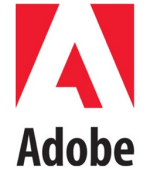 While we were busy working, Adobe took over the Internet. More specifically, Adobe’s software took over just about every aspect of web design and development. Is this really a good thing for web designers and developers? Or for web users? Or for anyone, other than Adobe? My answer is a resolute, unwavering “No”.
While we were busy working, Adobe took over the Internet. More specifically, Adobe’s software took over just about every aspect of web design and development. Is this really a good thing for web designers and developers? Or for web users? Or for anyone, other than Adobe? My answer is a resolute, unwavering “No”.
Now let me explain why.
A little history
Graphics software and the Web
I designed my first website in 1996. And although Adobe Photoshop had already declared itself the “Industry Standard”, there was still software from worthy competitors available for me to use in my work. In the mid to late 1990s, Corel’s Photo-Paint had already become a reasonable alternative to Photoshop. Jasc’s Paint Shop Pro was growing in popularity, particularly among Internet shareware purchasers. There was also Macromedia’s Fireworks and Ulead’s PhotoImpact, both of which became particularly popular among web designers. I evaluated the competition, and chose PhotoImpact as my first web graphics editor, appreciating both the features and the price.
Coding software and the Web
I used Microsoft Notepad to code that first site in 1996. Fortunately, the mid-to-late 1990s brought new and better Web coding tools to the marketplace. Developer Nick Bradbury created HomeSite, a text based code editor, which was something like using Notepad on steroids. Meanwhile, Microsoft, Macromedia, and Adobe developed WYSIWYG (What You See Is What You Get) editors, which enabled creating a website without writing code.
Video and the Web
When video first appeared on the Internet, it was in a variety of formats, including Microsoft’s AVI, and the Moving Picture Experts Group’s MPG. Flash was still being used for its intended purpose (creating vector animation).
The Adobe factor
Adobe angst
So, why do I feel Adobe is so bad for our business? It’s because Adobe learned a great deal from its competitors, then swallowed most of them up in takeovers, and left the rest struggling to stay in business.
Adobe and web design software
Most web designers don’t realize this, but a great deal of what makes Photoshop a powerful tool for web design came from innovations from Adobe’s competitors. One of the most important web design features in Photoshop is its Web Export, which displays your original image versus versions compressed in the GIF and/or JPG and/or PNG formats. You can compare formats, test various compression settings, and find the perfect format and compression settings needed for your image. However, Adobe didn’t invent this type of web export software. It was first seen in Ulead PhotoImpact version 3.01 in 1996. At the time, you couldn’t even save a JPG in Photoshop, doing so required a special plugin.

Another web feature that’s now a standard in Photoshop is the ability to create HTML image slices. A single image can be cut into multiple images, enabling each “slice” to have its own hyperlink. The process also allows a Website to appear to load faster, since multiple images are downloading simultaniously, occupying the viewer’s attention. As with Web Export, this feature did not originate with Adobe, it was first seen in Macromedia’s Fireworks.
Just how feature limited was Photoshop in 1996? In summary, let me put it this way: it had one (and only one) level of undo/redo.
Adobe and web coding software
As for Nick Bradbury’s HomeSite, it eventually became the code editor inside Macromedia’s Dreamweaver. Dreamweaver set itself apart from competitors such as Microsoft’s Front Page (which wrote awful code) and Adobe’s GoLive (which had an awful workflow). Dreamweaver was the first major product to truly produce WYSIWYG HTML, and later WYSIWYG Dynamic HTML (HTML plus CSS and JavaScript). Further, Dreamweaver did so in a way that worked for just about any browser, on just about any operating system.
Adobe and Flash Video
The horror that has become Flash Video is somewhat self explanatory. Compare Flash to just about any other format, and Flash will usually produce the worst quality results. The MP4 format produces much better results at similar bandwidth. Although YouTube is starting the process of converting to MP4, just about every other video sharing site in existence is using Flash. Thanks, Adobe.
From innovator to troublemaker
 And thus, the problem: Adobe now owns Fireworks and Dreamweaver and Flash, and competing products such as Ulead PhotoImpact are being phased out of existence. In this new “Adobe owns it all” scenario, where will future innovation come from? What designer with the limited resources of Nick Bradbury will be able to compete with Adobe? What small company like Ulead will create the next web compression innovation? And what will Adobe’s motive be to control its already out-of-control prices when there are no remaining competitors?
And thus, the problem: Adobe now owns Fireworks and Dreamweaver and Flash, and competing products such as Ulead PhotoImpact are being phased out of existence. In this new “Adobe owns it all” scenario, where will future innovation come from? What designer with the limited resources of Nick Bradbury will be able to compete with Adobe? What small company like Ulead will create the next web compression innovation? And what will Adobe’s motive be to control its already out-of-control prices when there are no remaining competitors?
Adobe’s success may be good for Adobe, but in the end, with innovation crushed and prices high and going higher, Adobe’s market dominance will have a negative impact on the rest of us.
About the author:
Anthony Celeste is a technical writer, multimedia developer, and Windows programmer. Anthony wrote about color theory and Web design in “Corel DRAW 10: The Official Guide”, and covered animation and special effects in “Ulead PhotoImpact 7: The Official Guide”.



























